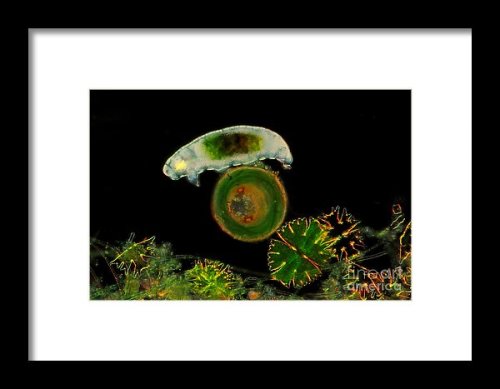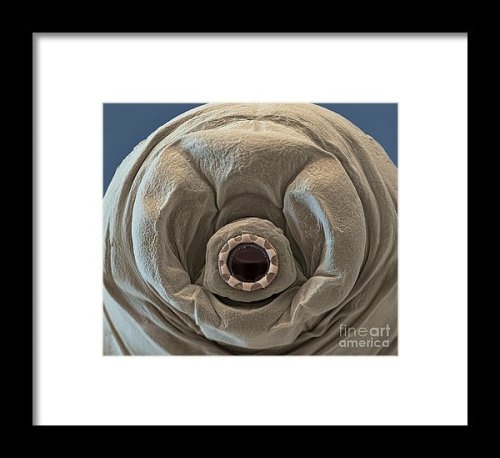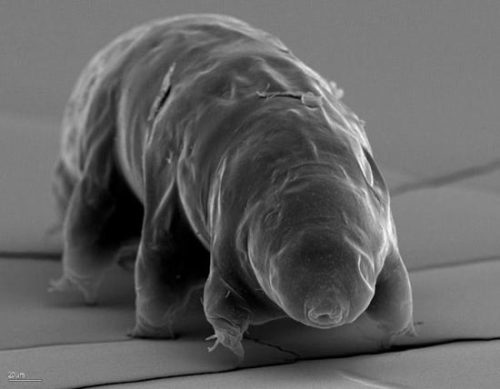#water bear
I Am A Water Bear, Hear Me Roar
Water bears (or tardigrades) are tiny invertebrates that live in aquatic and semi-aquatic habitats such as lichen and damp moss. They require water to obtain oxygen by gas exchange.
In dry conditions, they can enter a cryptobiotic state of desiccation, known as a tun, to survive. In this state, water bears can survive for up to a decade.
Water bears are found throughout the world, including regions of extreme temperature and pressure, like hot springs and deep underwater. They can even survive high levels of radiation and the vacuum of space.
BUY WATER BEAR SHOWER CURTAINS
BUY WATER BEAR BEACH TOWELS
BUY WATER BEAR WEEKENDER TOTE BAGS
BUY WATER BEAR SMART PHONE CHARGERS
Post link
Tardigrades, also called water bears or moss piglets are tiny 1mm long animals that can survive in unbelievably hostile conditions.
They are capable of surviving…
- 6000 metres up a mountain, and 4000 metres below the sea
- temperatures as high as 150 degrees Celsius and almost as low as absolute zero
- crushing pressures of up to 6000 atmospheres, six times that of the deepest trench in the ocean
- 10 years without water
- thousands of times more radiation than humans can survive
- The Vacuum and solar radiation of open SPACE for ten days
Post link

Ripped, yet always looking back…
Crater Lake Tardigrade/Water Bear (Paramacrobiotus craterlaki)
The name “tardigrade” refers to an entire phylum of microscopic eight-legged animals (keep in mind that two other examples of phyla are mollusca and chordata, and chordata contains all animals that have a backbone). Tardigrades are probably most well known for their ability to survive a wide variety of extreme environments. They can survive extreme temperature, pressure, radiation, and desiccation. They can even survive the vacuum of space. They manage to endure these conditions by entering a state of cryptobiosis and becoming a “tun.” In this process, they loose a massive amount of water and and essentially enter a state of suspended animation.
Available as a sticker on Etsy!
Etsy|DeviantArt|Instagram
Post link
‘Water bears’ are first animal to survive space vacuum
Tiny invertebrates called 'water bears’ can survive in the vacuum of space, a European Space Agency experiment has shown. They are the first animals known to be able to survive the harsh combination of low pressure and intense radiation found in space.
Water bears, also known as tardigrades, are known for their virtual indestructibility on Earth. The creatures can survive intense pressures, huge doses of radiation, and years of being dried out.
After 10 days of exposure to space, the satellite returned to Earth. The tardigrades were retrieved and rehydrated to test how they reacted to the airless conditions in space, as well as ultraviolet radiation from the Sun and charged particles from space called cosmic rays.
The vacuum itself seemed to have little effect on the creatures. But ultraviolet radiation, which can damage cellular material and DNA, did take its toll.
Post link






















